Accepted Scientific Name: Austrocactus bertinii (Cels ex Hérincq) Britton & Rose
Cactaceae (Britton & Rose) 3: 44. 1922 [12 Oct 1922] Britton & Rose

Austrocactus patagonicus Photo by: Carolina González
Origin and Habitat: Chubut and Negro Rivers in Patagonian Argentina and also in Neuquen, Mendoza, Santa Cruz and la Pampa. (Austrocactus patagonicusSN|4011]]SN|4011]] in Chile, near Chile Chico, has been destroyed by the eruption of the volcano Hudson in 1991, but it still exist in neighbouring Argentina.)
Altitude: Sea level to about 1400 metres of altitude.
Habitat and Ecology: This species occurs in cold areas, where it grows in the shelter of shrubs and covered by grass, with little exposure to sunlight along with Tephrocactus darwiniiSN|20945]]SN|20945]]. This species is common and abundant in Argentina. There are no major threats to this species; it may be favored by livestock grazing. In the Chilean range it is threatened by cherry tree agriculture and urbanization.
Synonyms:
See all synonyms of Austrocactus bertinii
back
Accepted name in llifle Database:Austrocactus bertinii (Cels ex Hérincq) Britton & RoseCactaceae (Britton & Rose) 3: 44. 1922 [12 Oct 1922]Synonymy: 12
back
Common Names include:
SPANISH (Español): Cacto patagónico (Chile)
Description: Austrocactus patagonicusSN|4011]]SN|4011]] is an interesting frost hardy cactus covered with a mixture of light and dark spines, some hooked. It is one of the several synonyms of the extremely variable Austrocactus bertiniiSN|3996]]SN|3996]] which show a huge number of forms found in the vast distribution area. These different forms distinguish especially for the presence of hooked spines, size of the stems and colour of flowers, but all them show a continuous variation, so it is extremely difficult to establish the limit from one species to another. Austrocactus patagonicusSN|4011]]SN|4011]], in its broad sense, is considered a synonym of Austrocactus bertiniiSN|3996]]SN|3996]] that has fewer radial spine and pinkish-yellow flowers which contrasts with the pale rose-violet flowers of typical Austrocactus patagonicusSN|4011]]SN|4011]]. The relationships between the two species are not well-defined.
Habit: Plants offsetting, with several stems, 35 to 50 cm high.
Stems: Columnar, to 8 cm in diameter.
Ribs: 9-12 with distinct tubercles.
Central spines: 1-4, yellowish brown to dark red-brown, stout, sometimes hooked, 3-4 cm long.
Radial spines: 6-10, light colored, to 1,5 cm long.
Flowers: Produced near the apex, typically whitish or pale rose with some violet, to 4 cm long (occasionally yellow or orange too).
Fruits: Globose, nearly dry.
Bibliography: Major references and further lectures
1) Edward Anderson "The Cactus family" Timber Press, Incorporated, 2001
2) James Cullen, Sabina G. Knees, H. Suzanne Cubey "The European Garden Flora Flowering Plants: A Manual for the Identification of Plants Cultivated in Europe, Both Out-of-Doors and Under Glass" Cambridge University Press, 11/Aug/2011
3) David R Hunt; Nigel P Taylor; Graham Charles; International Cactaceae Systematics Group. "The New Cactus Lexicon" dh books, 2006
4) Andres Moreira-Munoz ?Plant Geography of Chile? Springer, 19/gen/2011
5) Umberto Quattrocchi ?CRC World Dictionary of Plant Names: Common Names, Scientific Names, Eponyms, Synonyms, and Etymology,? Volume 1 CRC Press, 17/nov/1999
6) Sara Oldfield ?Cactus and Succulent Plants: Status Survey and Conservation Action Plan? IUCN, 01/gen/1997
7) Zuloaga, F. O., O. N. Morrone, M. J. Belgrano, C. Marticorena & E. Marchesi. (eds.) "Cat?logo de las Plantas Vasculares del Cono Sur (Argentina, Sur de Brasil, Chile, Paraguay y Uruguay)". Monogr. Syst. Bot. Missouri Bot. Gard. 107(1): i?xcvi, 1?983; 107(2): i?xx, 985?2286; 107(3): i?xxi, 2287?3348. 2008.
8) Urs Eggli, Leonard E. Newton: ?Etymological Dictionary of Succulent Plant Names? Springer, Berlin/Heidelberg 2010
9) Revista de la Facultad de Agronomia . 3: 604 1897
10) Cactaceae. Jahrb?cher der Deutschen Kakteen-Gesellschaft page 33 1939
11) Walter Erhardt, Erich G?tz, Nils B?deker, Siegmund Seybold: ?Der gro?e Zander.? Eugen Ulmer KG, Stuttgart 2008
12) Christoper Brickell (Editor-in-chief): ?RHS A-Z Encyclopedia of Garden Plants.? Third edition. Dorling Kindersley, London 2003
13) Kiesling, R., Demaio, P., Trevisson, M. & Saldivia, P. 2013. Austrocactus bertinii. In: IUCN 2013. "IUCN Red List of Threatened Species." Version 2013.2. <www.iucnredlist.org>. Downloaded on 18 February 2014.
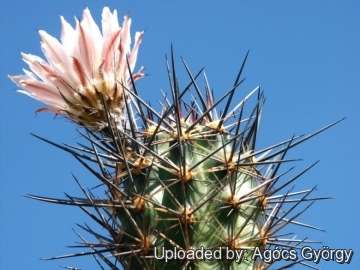 Rebutialand cactus collection Demjén, Hungary. Photo by: Agócs György
Rebutialand cactus collection Demjén, Hungary. Photo by: Agócs György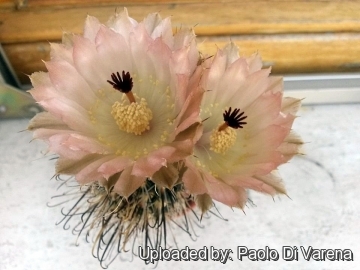 Austrocactus patagonicus Photo by: Paolo Di Varena
Austrocactus patagonicus Photo by: Paolo Di Varena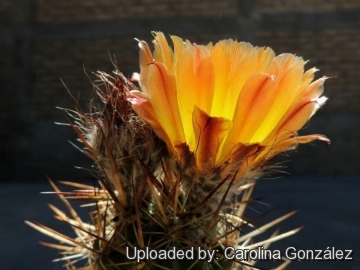 Austrocactus patagonicus Photo by: Carolina González
Austrocactus patagonicus Photo by: Carolina González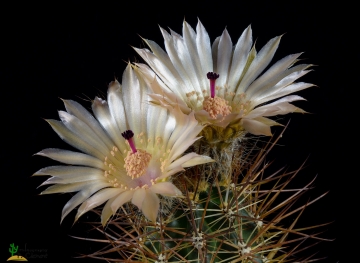 Austrocactus patagonicus Photo by: Peiffer Clement
Austrocactus patagonicus Photo by: Peiffer Clement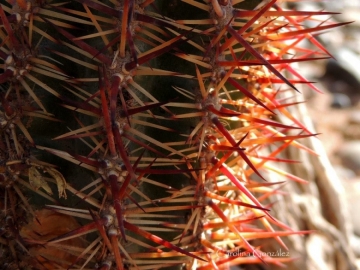 In habitat. (Neuquén province, Argentina) Photo by: Carolina González
In habitat. (Neuquén province, Argentina) Photo by: Carolina González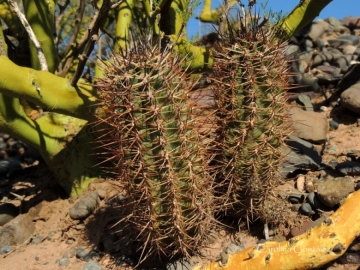 In habitat. (Neuquén province, Argentina) Photo by: Carolina González
In habitat. (Neuquén province, Argentina) Photo by: Carolina González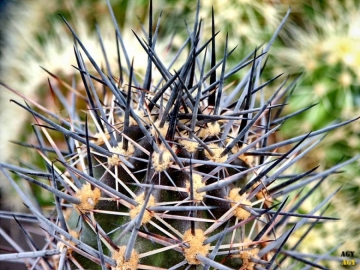 Habit at Rebutialand cactus collection Demjén, Hungary. Photo by: Agócs György
Habit at Rebutialand cactus collection Demjén, Hungary. Photo by: Agócs György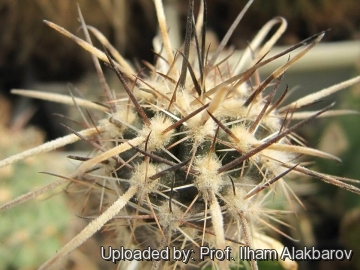 Austrocactus patagonicus Photo by: Prof. Ilham Alakbarov
Austrocactus patagonicus Photo by: Prof. Ilham AlakbarovCultivation and Propagation: Austrocactus patagonicusSN|4011]]SN|4011]] are relatively easy to grow, providing they are kept cold, but dry during autumn and winter. However difficult to find high quality plants of this species in cultivation. They are very cold hardy cacti theoretically hardy to -18°C (or more) particularly when dry. These cacti are often grown grafted. Plants cultivated outdoors are drought tolerant and take full sun. They are wonderful companion plant for Echinocereus and Escobaria cacti species.
Soil: It need a very well-drained, coarse mineral soil. To prevent rottenness it is also advisable to surround its root neck by very rough sand or grit, this help a fast water drainage and an appropriate air circulation.
Repotting: Repot in the spring, when its roots become cramped. Generally, it should be repotted every other year in order to provide fresh soil. After repotting, do not water for a week or more.
Watering: It grows fairly fast in summer if provided with copious water but allows to dry thoroughly before watering again. During the winter quiescent period it must be strictly kept dry since it is very sensitive to any moisture excesses.
Fertilization: During the beautiful season it’s good to enrich the soil using a fertilizer rich in potassium and phosphorous, but poor in nitrogen, because this chemical element doesn’t help the development of succulent plants, making them too soft and full of water.
Exposition: It is essential to give full sun otherwise they will become atypical. If grown in full sun, the new growth will flower in spring and summer.
Frost Tolerance: Very frost hardy can withstand temperatures down to minus 18° C (or less). In cultivation overwinter in a cool place (at -5/-10°C) this is important for the flowers as well as for plants health. Without this cool winter period they normally wont get any buds.
Heat tolerance: In warmer climates it should be protected from excessive heat and too much sun sun in summer because it is not very heat tolerant.
Sun Exposure: Needs a full sun exposure (light shadow my be useful in the hottest summer days)
Reproduction: Suckers or seed. Remove the basal suckers (if available) in spring or summer and let the cuttings dry for a few days before inserting in compost. Sow the seeds in spring in a well-aerated compost at a temperatures of 22-24°C . Stand the pots in water, moisten thoroughly and drain. Scatter and press lightly the seed onto the top of the compost. But do not cover the small seeds with compost. Secure a polythene bag around the pot or cover the container with glass or and place in a warm shaded place. If possible, germinate in a propagator. Some seedlings may appear within a week or 10 days others will take longer. At lower temperatures, germination usually takes considerably longer. Once germination has taken place, remove gradually the glass or plastic and move into a good light but not in direct sun. If the young plants are exposed to too much sun, or the compost dries out, they may stop growing and often turn red; once they stop, it is often difficult to persuade them to start growing again. Never let the pots dry out-but don't saturate them either. A sodden compost is as harmful as a dry one. For its sensitive roots this species is frequently grafted to avoid root problems.
Your Photos

by Carolina González

by Carolina González
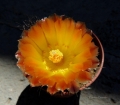
by Carolina González

by Carolina González

by Carolina González
























